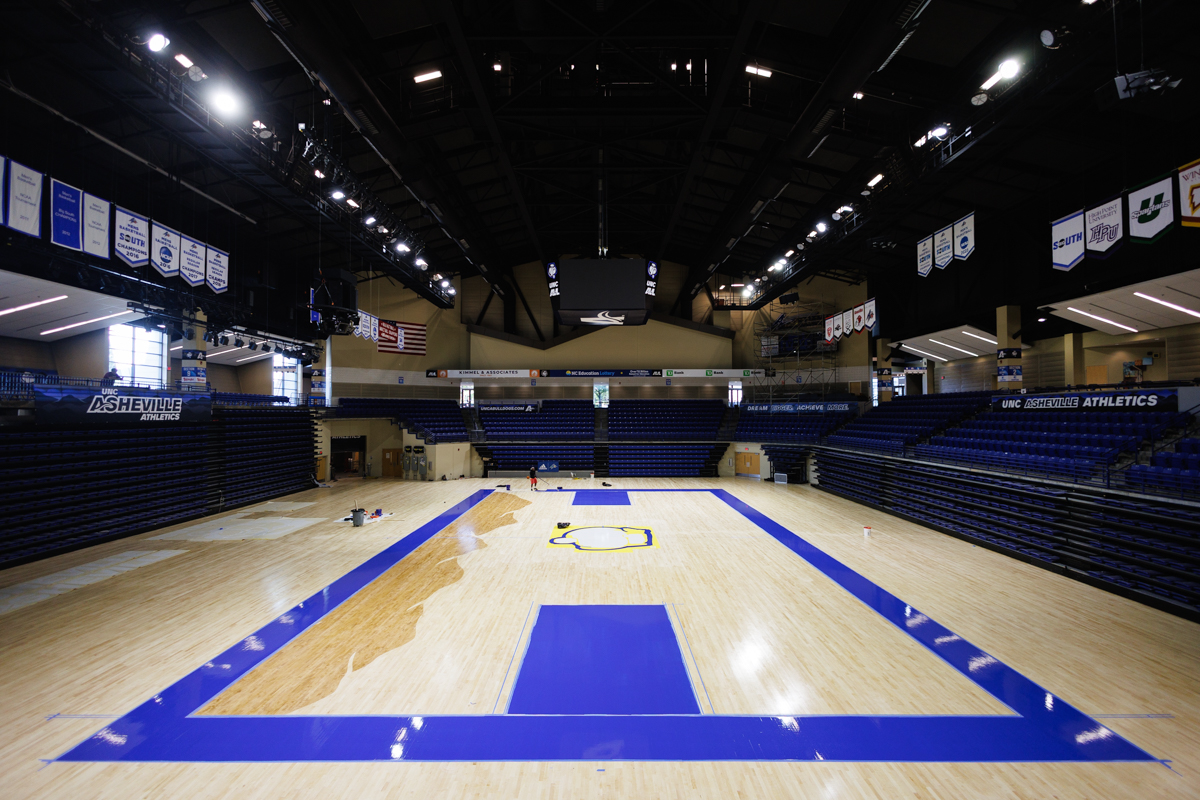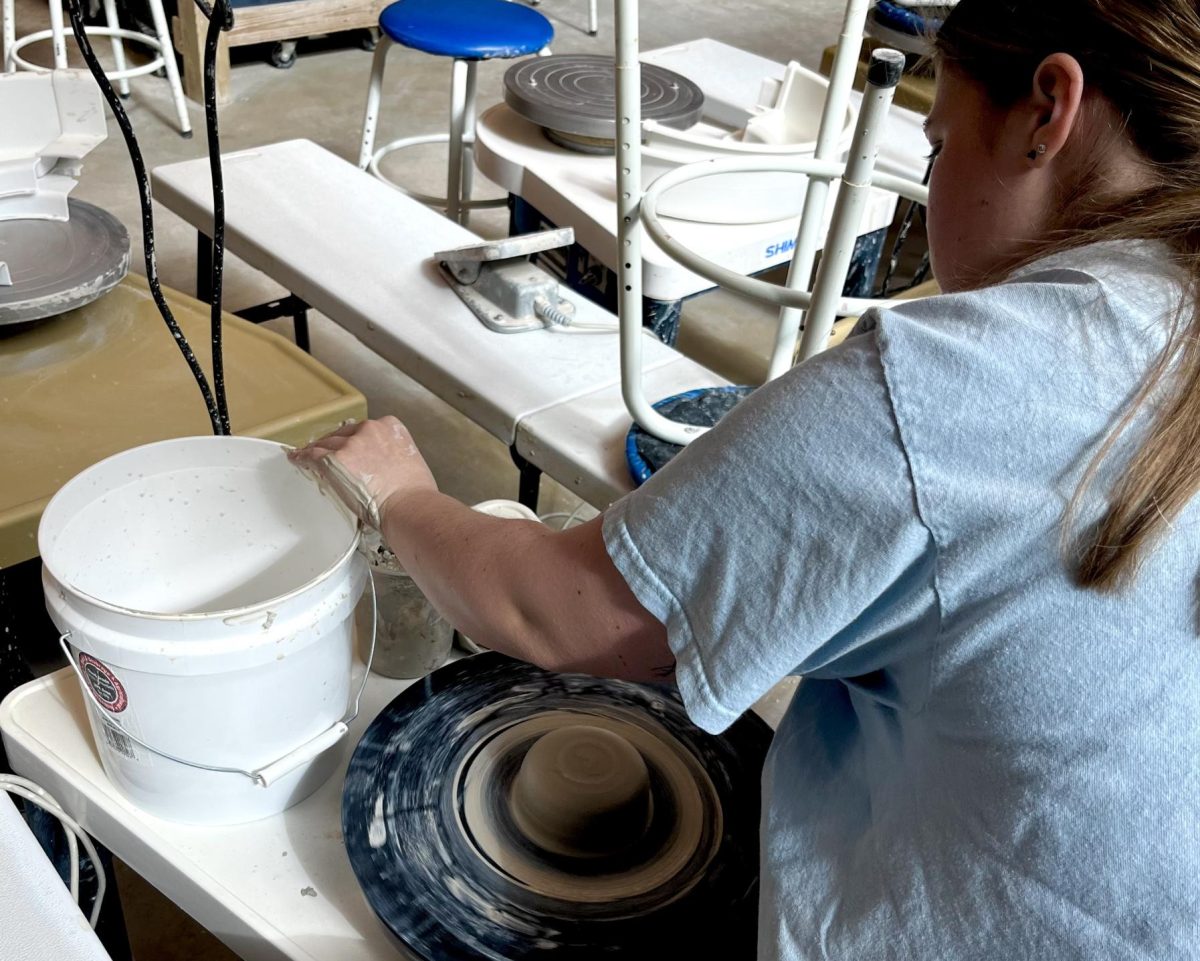Eliza Hill
Arts & Features Editor
[email protected]

serve the East End community.
Asheville’s East End neighborhood engulfs The Block on Eagle Street to Martin Luther King Jr. Drive and once housed a thriving Black community before urban renewal ravaged the area, original East End resident from Mountain Street, Orma Buie said.
She said the neighborhood was complete with Black-owned businesses, schools, entertainment and shopping before urban renewal ravaged the area. All she has left of the once-flourishing, tight-knit neighborhood are memories.
“I can ride through the East End, but it only makes me cry,” Buie said. “They just wiped out a whole era of my life that only exists in my mind.”
The East End Valley Street Vision Plan, created by the East End Neighborhood Association, states that the Model Cities Conservation/ Rehabilitation program dismantled the East End neighborhood during urban renewal in the ‘60s and ‘70s, tearing apart the area’s infrastructure and character. While some houses were physically altered and stabilized, Buie said gentrification efforts dramatically destabilized and displaced the family-like community and the neighborhood may never be the same.
Author of “I am a Nasty Branch Kid: Women’s Memories of Place in the Era of Asheville’s Urban Renewal,” and associate professor of history and Africana studies at UNC Asheville, Sarah Judson, Ph.D., said Asheville began the urban renewal process in the 1950s to execute municipal improvements, mainly in neighborhoods considered blighted or those failing to meet code, with federal money to increase the city’s tax value. During this time, The Department of Transportation chose to build a road, now called South Charlotte Street, through the East End Valley Street Neighborhood, causing destruction of property and displacement of families.
“This is really interesting to me because the city code previous to that hadn’t really been enforced much, so when they sent the inspector up to that neighborhood, all of the sudden all these houses didn’t meet code. And so there’s a justification for the tear down,” Judson said. “Valley Street was part of a commercial area for Black businesses. Eagle, Market, and Valley Street—there were all these stores and restaurants, there was a college for Black veterans. There was all this commercial life that was basically destroyed when DOT built U.S. 25 and when the buildings started to get torn down. The long-term legacy is a loss of capital.”
Preserver of local history, Henrietta Marianne “Cissy” Dendy said Asheville’s urban renewal projects flipped some of Asheville’s communities past the point of recognition. After spending time in New York and the military, Dendy came home to a demolished Valley Street.
“Asheville, I think, was still on record as the largest urban renewal project of any city in the Southeast,” Dendy said. “I literally was gone for several years and when I came back to visit, there was no Valley street. It was gone. They had completely bulldozed it.”
Judson said Asheville’s questionable urban renewal practices blocked accumulation of generational wealth, furthering economic loss for Black communities.
“That is the history of this city. It’s a history of displacement and racial capitalism. Tourism flourished and was developed through the use of enslaved labor in the 19th century. The city stole and displaced people and prevented them from generating any kind of generational wealth,” she said. “We don’t know the sum of capital that the Black community lost through urban renewal.”
East End matriarch and president of the East End Neighborhood Association Renee White moved to the East End off of Martin Luther King Jr. Drive 55 years ago. She said the brick and nails from her grandmother’s home on Hildebrand Street, which was torn down due to urban renewal, can still occasionally be seen through the eroded soil after heavy rain. Although gentrification shattered her community, she and many other original East Enders continue passing on the stories of the historic neighborhood.
“I miss the unity we had. Because we were all family. I miss the fact that we can’t go to a Black-owned business in East End anymore to do anything. I miss the fact that everybody’s home — it may not have been in the best shape — but it was certainly welcoming. It was loving and you always had the fellowship of being able to go next door to your neighbors house and not have to worry about things that are going on in the world now. The neighborhood watched out for each other. And I miss the fact that we don’t have anything — except pictures — that says that this was once an all Black, thriving neighborhood. It’s all gone,” White said.
She said she enjoys reminiscing with fellow original East Enders about life before urban renewal and the joyful nuances of living on the East End.
“I always tell the story about Mrs. Jack who stayed around the corner from us. She had the biggest apple tree in the whole wide world. We would always go around the corner and get apples off of her tree and she never wanted us to do that. And if she would catch us, she would call our parents and we would get in trouble for getting apples off of Mrs. Jack’s tree,” she said. “It’s funny to think about that kind of stuff and when we get together and think about all the memories that we had, that’s what we do — we laugh. And that’s all we can do now. There’s not evidence that we had all of that.”
Buie remembers the East End as a safe, close-knit network of residents who cared about each other and a place where children could roam together and enjoy the outdoors. She said she would cry when her parents called her in after a day spent playing with friends on Beaucatcher Mountain.
“Everybody watched everybody. It was the true village concept,” she said. “The only thing I can say about the Model Cities project and gentrification is that it dismantles the mind. It’s mind-boggling because you not only just took a house, you took the whole concept away. You can’t go back. You can only go back in the mind and the memory. We only have memories, we can’t go home.”
White said The Block, comprised of Eagle Street and Market Street off of Biltmore Avenue, once consisted of Black-owned barber shops, pool halls, soul food restaurant and boutiques surrounding the YMI cultural center, given to the community by the Vanderbilts.
“The Block is tearful for me. It’s tearful for me to go on The Block and stand on Eagle Street and Market Street and see how it’s changed. When I was growing up, we had Black-owned businesses, the whole block was Black-owned,” she said.
Buie said The Block served as a hub for Asheville’s East End network to gather after work and on weekends, as the area contained all the staples the community needed.
“The Block was like Lexington Avenue is now, where you have to walk in the street because the sidewalks are full. That was The Block,” she said. “We had the doctors, we had a theater, shoe shine, everything that you need for the ‘hub and bub’ day. My godmother had a clothing store, The Good Value Shop, and of course, none of us had good teeth because we used to go to Mr. Budd’s and eat candy instead of buying lunch. Back then lunch cost 15 or 20 cents.”
Since then, expensive restaurants, hotels, condos and pricy shops stand in place of the successful Black-owned businesses that once gave life and character to The Block. White said the area’s new economic bracket creates a barrier for original residents, making it difficult for East Enders to afford to dwell where they grew up, had families and built their lives.
“It’s tearful. There are apartments and condos on Market Street and Eagle Street that unfortunately, Black people can’t afford to move in. There’s a hotel up there that we never had, the businesses behind Mount Zion Church were sold. The Foundry hotel bought all of that property, so now there’s a huge, expensive hotel there that we probably can’t afford to stay in. There’s nothing up there anymore that caters to or that says that these were all Black streets with all Black businesses located on them. And so it’s hurtful. It’s really hard for me to go through Eagle or Market Street,” White said.
To help restore the neighborhood’s sense of unity, she started a heritage festival in Martin Luther King Jr. park to provide a space for original East Enders to convene and reunite, despite the drastic turn their community endured.
Buie said the Model Cities Project went about gentrifying the area in an extremely damaging way, forcing people out of their life-long homes and raising prices so East Enders could never return.
“They said ‘You can go and we’re gonna let you come back,’ but there was never a comeback,” Buie said.
White said her community has accepted gentrification and its presence in Asheville, but encourages county and government officials to go navigate the situation in a humane, fair way, without displacing and breaking apart vital communities in Asheville.
“They’ve got to do better. Black people would like to stay in their homes, we’d like to continue to have nice neighborhoods. Just stop it with raising taxes and doing all this stuff to push us out,” the East End native said. “There should have been a way that funding was available or some kind of assistance available for the residence to where they could have kept their homes and repaired the houses and not been moved to some public housing. So, I think there should have been other ways to look at the urbanization of this community and the many others that went through urban renewal, rather than displace the residence who have been native people living in these neighborhoods.”
She said as taxes rise, East End residents in need of income resort to selling their houses to developers who flip the properties and sell them for a steep profit. As the president of the East End Neighborhood Association, she strives to revitalize the neighborhood by working with government officials to keep taxes down, slow down gentrification and try to restore the neighborhood’s unity and family-like quality. She also works to preserve the area’s history by installing informational markers to educate people, since much of the East End’s history was demolished — particularly Stephens-Lee High School, which the city destroyed with little notice.
“That’s tearful, because that school should still be standing. They tore everything down except for the gym. That’s a huge part of history that’s gone. Completely gone. That will be something that we will want our generation, the generation after us, before us, behind us and beside us to know about. And know all that these kids can see is a gym,” White said.
White also serves as vice president of the Asheville Buncombe-Community Land Trust, an organization designed to help people obtain affordable housing by preserving land and utilizing existing structures in Asheville’s predominantly Black neighborhoods.
The organization purchased their first home in the Shiloh community, and will host an open house on Oct. 8 from 4 – 7 p.m. at 401 Caribou Road. She encourages anyone interested to visit the Asheville-Buncombe Community Land Trust’s website, abclt.org for more information.
“I’m really proud of that accomplishment. What I’m trying to do now is get the city to release some of the land that they own in this neighborhood and other neighborhoods so that we can potentially build something affordable that people can move into. We need affordable housing and we need people who are in those houses to be able to stay in those houses,” she said.
With hope and determination, White continues her work to restore her beloved community and pass on its vital history to future generations.
“It’s still a great neighborhood, it’s going to continue to be great and I fight very hard to make sure it’s going to stay great,” she said. “The only thing we can try to do is move forward and do the best we can in these particular trying times, and keep telling our story.”
























